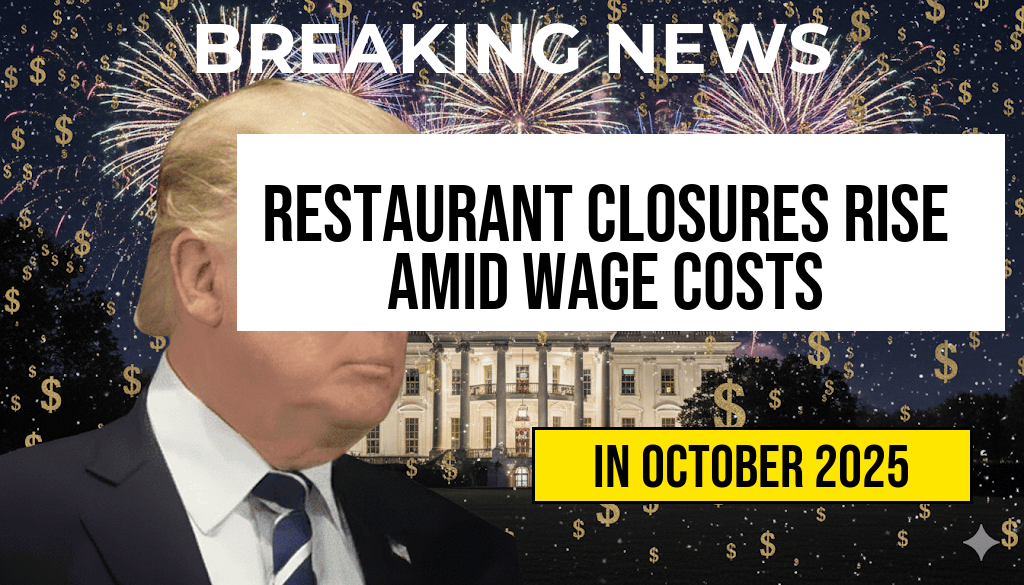The restaurant industry in Washington, D.C., is facing a challenging landscape as an increasing number of eateries shut their doors. One local establishment has cited a staggering $60,000 annual increase in operational costs due to recent wage regulations as a significant factor in its decision to close. This trend raises questions about the broader implications for food prices and the sustainability of restaurants in the nation’s capital. As establishments grapple with rising labor costs, many are left wondering how these changes will impact their dining experiences and the overall economy.
Impact of Wage Regulations on Restaurant Operations
The D.C. restaurant in question, which has chosen to remain anonymous, highlighted that the new wage regulations, aimed at improving worker compensation, have had a profound financial impact. In a city where the cost of living is already high, the increase in payroll expenses has forced many owners to reevaluate their business models.
Understanding the Cost Breakdown
To understand how these wage regulations contribute to rising operational costs, consider the following breakdown:
| Cost Category | Annual Increase |
|---|---|
| Employee Wages | $40,000 |
| Payroll Taxes | $10,000 |
| Benefits and Insurance | $10,000 |
| Total Annual Increase | $60,000 |
Rising Costs and Menu Prices
As restaurants grapple with these increased expenses, many are considering how to maintain profitability without alienating customers. The common approach has been to raise menu prices, a move that can create a delicate balance between sustaining business and keeping patrons satisfied.
- Price Adjustments: Many restaurants are expected to increase menu prices by 5% to 15% to offset rising labor costs.
- Menu Revisions: Some eateries are opting to streamline their menus, focusing on high-margin items to maximize profits.
- Operational Changes: Restaurants may reduce hours or staff to cut costs, impacting service quality.
The Broader Economic Context
The closures of restaurants are not happening in a vacuum. The D.C. area has experienced a surge in food prices, driven by various factors including inflation and supply chain disruptions. According to recent data from the U.S. Bureau of Labor Statistics, food prices increased by nearly 7% in the past year, compounding the challenges faced by restaurant operators.
In light of these economic pressures, the future of dining in D.C. appears uncertain. Consumers may have to adjust to higher prices and potentially fewer dining options as the market stabilizes.
Community Response and Future Outlook
The local community has expressed concern over the potential loss of beloved eateries. Many residents have taken to social media, voicing their support for local businesses and urging local government to reconsider the implications of wage regulation policies.
Experts suggest that while the intention behind wage regulations is to support low-income workers, the unintended consequences may lead to a reduction in available dining options and increased prices for consumers. The balance between fair wages and sustainable business practices remains a contentious issue.
What Lies Ahead for D.C. Restaurants?
As restaurants continue to navigate this evolving landscape, several factors will play a critical role in determining their fate:
- Consumer Behavior: Will patrons be willing to pay more for meals as prices rise?
- Government Policy: Will there be adjustments to wage regulations in response to industry feedback?
- Economic Conditions: How will inflation and economic recovery impact the restaurant sector?
For more insights on wage regulations and their impact on the restaurant industry, you can visit Forbes or explore the data from the U.S. Bureau of Labor Statistics.
The rise in restaurant closures serves as a stark reminder of the challenges facing the industry, which must adapt to changing regulations and economic conditions while striving to meet consumer demands. As the narrative unfolds, both restaurant owners and patrons will need to navigate this complex terrain together.
Frequently Asked Questions
What are the reasons behind the recent restaurant closures in D.C.?
The recent surge in restaurant closures in D.C. can be attributed to several factors, including increased operating costs stemming from new wage regulations. One particular eatery reported an annual increase of $60,000 due to these regulations, prompting concerns about sustainability.
How do wage regulations affect restaurant pricing?
Wage regulations directly impact a restaurant’s labor costs, which are a significant part of overall expenses. As restaurants face higher wages, they may need to raise menu prices to maintain profitability.






